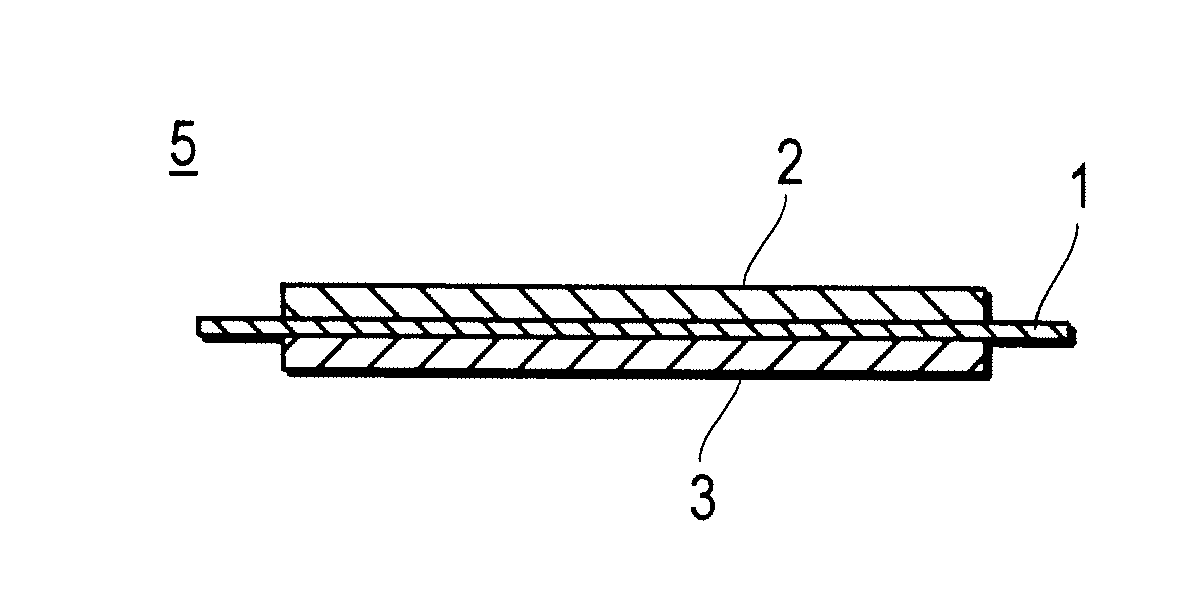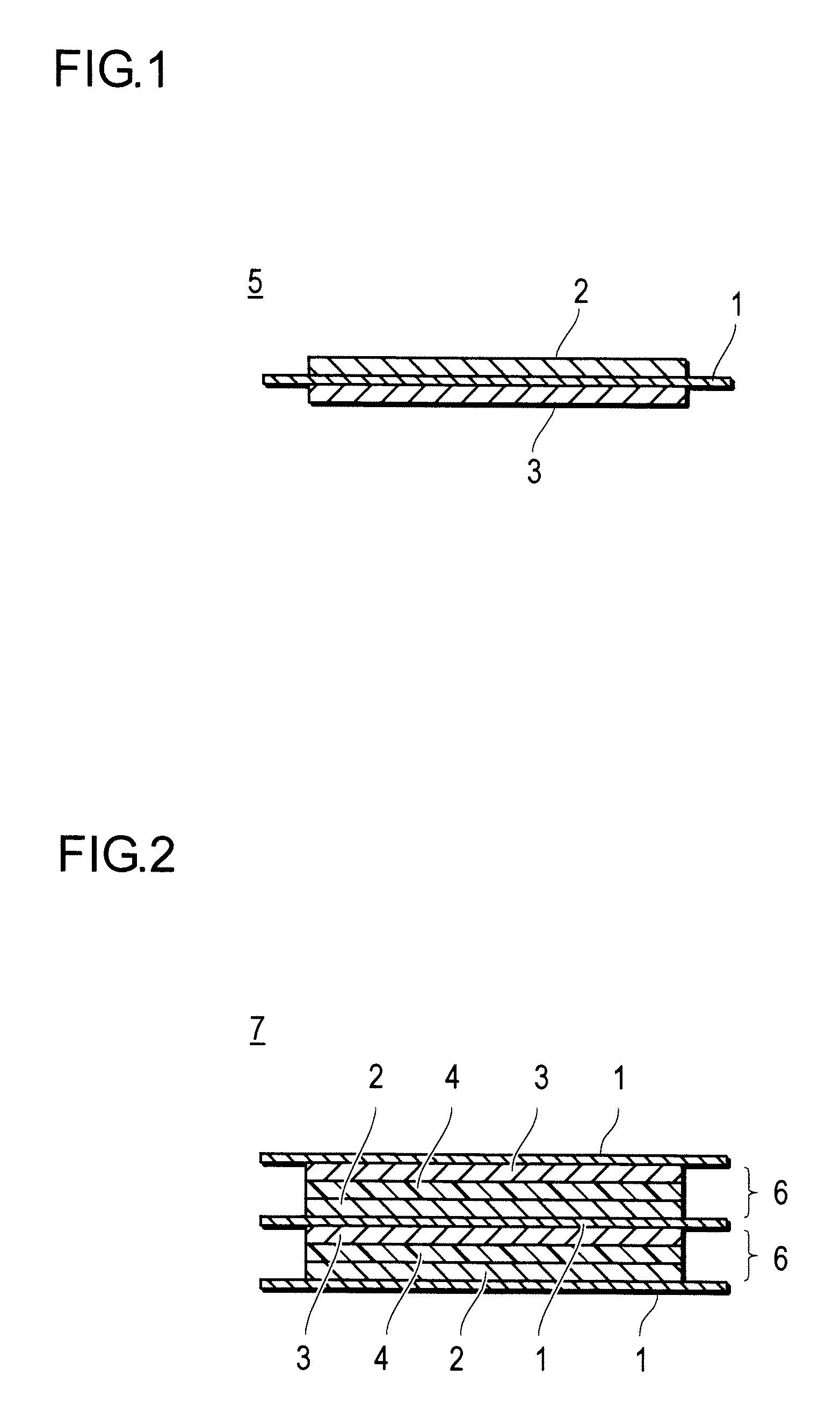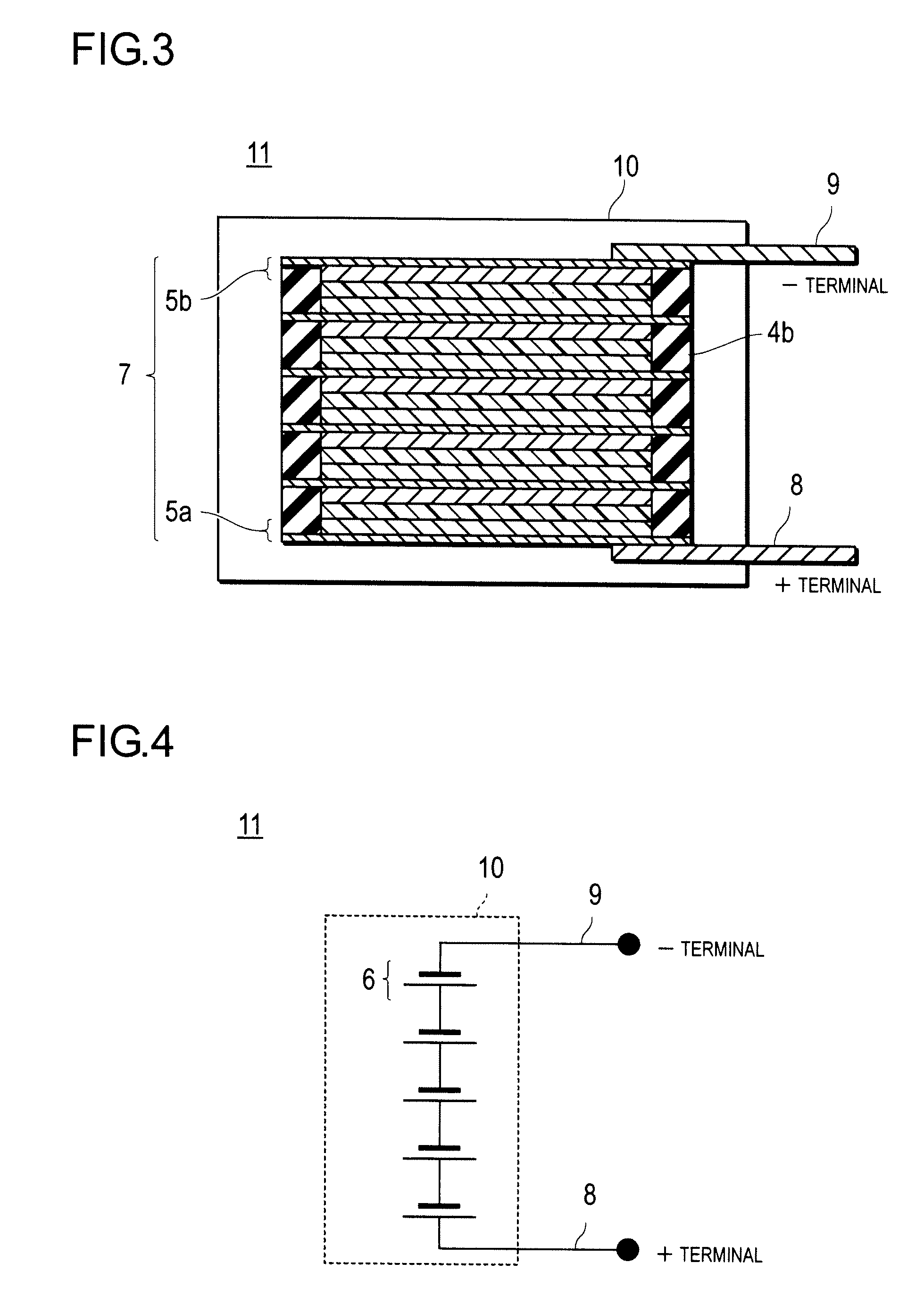Bipolar battery
a battery and bipolar technology, applied in the field of bipolar batteries, can solve the problems of short circuit and liquid junction, and achieve the effect of preventing short circuit and high reliability
- Summary
- Abstract
- Description
- Claims
- Application Information
AI Technical Summary
Benefits of technology
Problems solved by technology
Method used
Image
Examples
example 1
An Example of a Micro-Porous Membrane Separator Made of Polypropylene+a Rubber-Based Seal Part
A. Formation of an Electrode
1. A Positive Electrode
[0185]The following materials are mixed in predetermined ratios to prepare slurry for the positive electrode.
[0186]Firstly, materials composed of spinel, LiMn2O4 [85% by mass] having an average particle diameter of 2 μm, as a positive electrode active material, acetylene black [5% by mass] as a conductivity promoter, PVDF [10% by mass] as a binder, and NMP as a solvent for slurry viscosity adjustment were mixed in the above ratios to prepare the slurry for the positive electrode. The above NMP is removed as a whole by vaporization in drying the electrode, and not a configuration material of the electrode, therefore the suitable amount was added so as to provide suitable slurry viscosity. In addition, the above ratios represent those converted by components excluding the solvent for slurry viscosity adjustment.
[0187]On the one surface of a S...
example 2
An Example of a Micro-Porous Membrane Separator Made of Polypropylene+a Heat Fusion Resin-Based Seal Part
A. Formation of an Electrode
1. A Positive Electrode
[0200]The following materials are mixed in predetermined ratios to prepare slurry for the positive electrode.
[0201]Firstly, materials composed of spinel, LiMn2O4 [85% by mass] having an average particle diameter of 2 μm, as a positive electrode active material, acetylene black [5% by mass] as a conductivity promoter, PVDF [10% by mass] as a binder, and NMP as a solvent for slurry viscosity adjustment were mixed in the above ratios to prepare the slurry for the positive electrode. The above NMP is removed as a whole by vaporization in drying the electrode, and not a configuration material of the electrode, therefore the suitable amount was added so as to provide suitable slurry viscosity. In addition, the above ratios represent those converted by components excluding the solvent for slurry viscosity adjustment.
[0202]On the one sur...
example 3
An Example of a Non-Woven Fabric Separator+a Rubber-Based Seal Part
A. Formation of an Electrode
1. A Positive Electrode
[0215]The following materials are mixed in predetermined ratios to prepare slurry for the positive electrode.
[0216]Firstly, materials composed of spinel, LiMn2O4 [85% by mass] having an average particle diameter of 2 μm, as a positive electrode active material, acetylene black [5% by mass] as a conductivity promoter, PVDF [10% by mass] as a binder, and NMP as a solvent for slurry viscosity adjustment were mixed in the above ratios to prepare the slurry for the positive electrode. The above NMP is removed as a whole by vaporization in drying the electrode, and not a configuration material of the electrode, therefore the suitable amount was added so as to provide suitable slurry viscosity. In addition, the above ratios represent those converted by components excluding the solvent for slurry viscosity adjustment.
[0217]On the one surface of a SUS foil (a thickness of 20 ...
PUM
| Property | Measurement | Unit |
|---|---|---|
| thickness | aaaaa | aaaaa |
| thickness | aaaaa | aaaaa |
| length | aaaaa | aaaaa |
Abstract
Description
Claims
Application Information
 Login to View More
Login to View More - R&D
- Intellectual Property
- Life Sciences
- Materials
- Tech Scout
- Unparalleled Data Quality
- Higher Quality Content
- 60% Fewer Hallucinations
Browse by: Latest US Patents, China's latest patents, Technical Efficacy Thesaurus, Application Domain, Technology Topic, Popular Technical Reports.
© 2025 PatSnap. All rights reserved.Legal|Privacy policy|Modern Slavery Act Transparency Statement|Sitemap|About US| Contact US: help@patsnap.com



